For thousands of years, human cultures worldwide have been dabbling in the art of fermenting foods and drinks. But we’re not the only ones to indulge in the fruits of fermentation. Foods and beverages become fermented through the microbial growth of yeast and bacteria. These microbes produce enzymes that convert starch and sugars into alcohol or acids. This process can occur through controlled microbial growth in laboratory settings and naturally through the process of decay. While some animals avoid fermented foods, others heartedly consume them.
In this guide, we’ll discover eight wild animals that eat fermented foods.
Read on to learn more!
1. Animals That Eat Fermented Foods: Elephants (Elephantidae)

Elephants
are particularly known for eating fermented marula fruit.
©iStock.com/WillieErasmus
You may have heard the claim that elephants (Elephantidae) will get drunk by eating overripe marula fruit. You may have also heard that a group of researchers in 2006 asserted this claim is false because elephants couldn’t eat enough marula fruit in one setting to become intoxicated. But then! In 2021, a team of researchers, including a molecular ecologist, revisited the previous study’s claim and found it erroneously assumed elephants and humans metabolize ethanol at the same rate and speed.
This most recent study concluded that elephants do not metabolize ethanol as fast or efficiently as humans and other great apes, thus allowing for the renewed possibility that elephants might preferentially consume fermenting marula fruit for its intoxicating effects.
2. The Pen-Tailed Tree Shrew (Ptilocercus lowii)

The diet of the pen-tailed tree shrew consists of fermented bertam palm nectar.
©sarin nana/Shutterstock.com
The diet of the pen-tailed tree shrew (Ptilocercus lowii) is comprised almost entirely of the fermented nectar of the bertam palm plant. The flower pods of the bertam palm are home year-round to various native yeasts that catalyze the fermentation process. In a beer-drinking competition, this Malaysian shrew could outdrink the heaviest of heavyweights, subsisting on a continuous diet of 3.8 percent alcohol.
Unlike some animals that consume fermenting foods, however, the pen-tailed tree shrew does not appear to be affected by the alcohol content. Their bodies have evolved to specialize in this rich source of fermented nectar without experiencing intoxicating effects.
3. Fruit and Nectar-Eating Bats
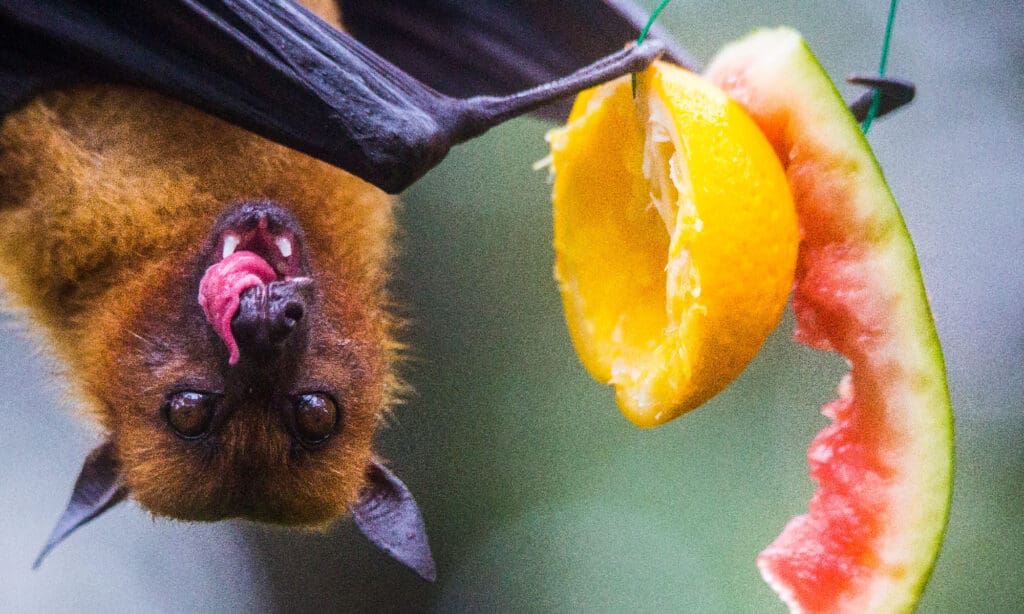
Nectar and fruit-eating bats will consume fermented foods without apparent intoxicating effects.
©Natalia Golovina/Shutterstock.com
Fruit and nectar-eating bats, frugivorous and nectarivorous, respectively, consume fermenting fruit or nectar. A 2010 study on six species of ethanol-consuming bats found that blood ethanol concentrations did not appear to affect echolocation and flying abilities. As such, it is likely that these bats have evolved a mechanism to ingest fermented foods without intoxicating effects that could decrease their ability to forage, navigate, and communicate.
4. Animals That Eat Fermented Foods: Black Bears (Ursus americanus)
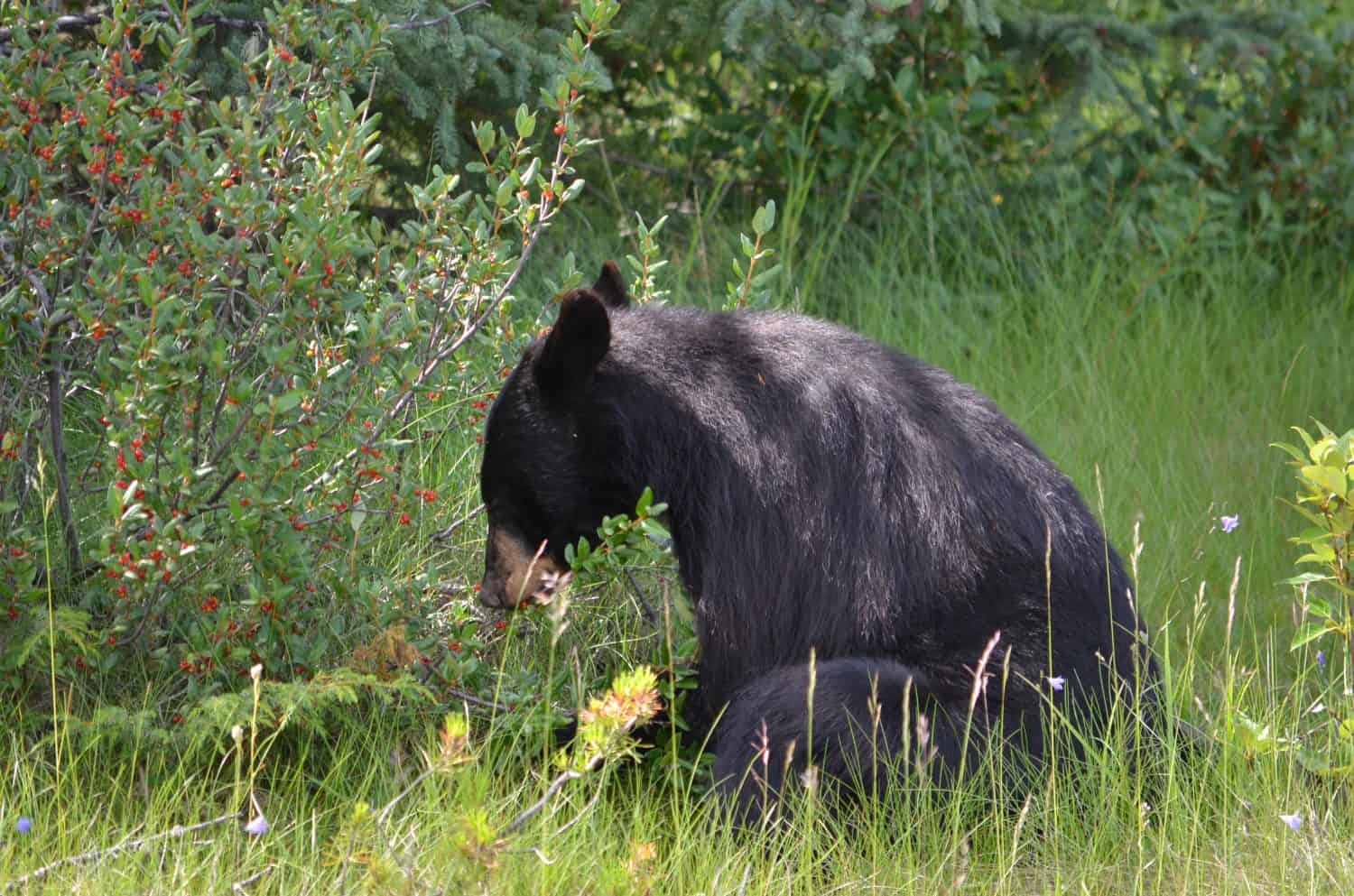
Black bears will frequently eat fermented fruit before ursid hibernation.
©Bob Hilscher/Shutterstock.com
Before ursid hibernation- the period of heavily reduced activity and denning from late fall through early spring- black bears (Ursus americanus) bulk up on as many calories as possible. Fallen apples and other fall fruit are excellent sources of sugars and carbohydrates. As such, black bears will readily eat the fruit fresh or fermented.
5. Sunda Slow Loris (Nycticebus coucang)

The Sunda slow loris will often consume fermented bertam palm nectar.
©hkhtt hj/Shutterstock.com
Joining the pen-tailed tree shrew on a fermented bertam palm nectar bender is the Sunda slow loris (Nycticebus coucang). In areas of Malaysia with an abundance of this fermented food, the bertam palm nectar can make up about a third of this slow-moving, arboreal primate’s diet.
6. Animals That Eat Fermented Foods: Orangutans (Pongo spp.)
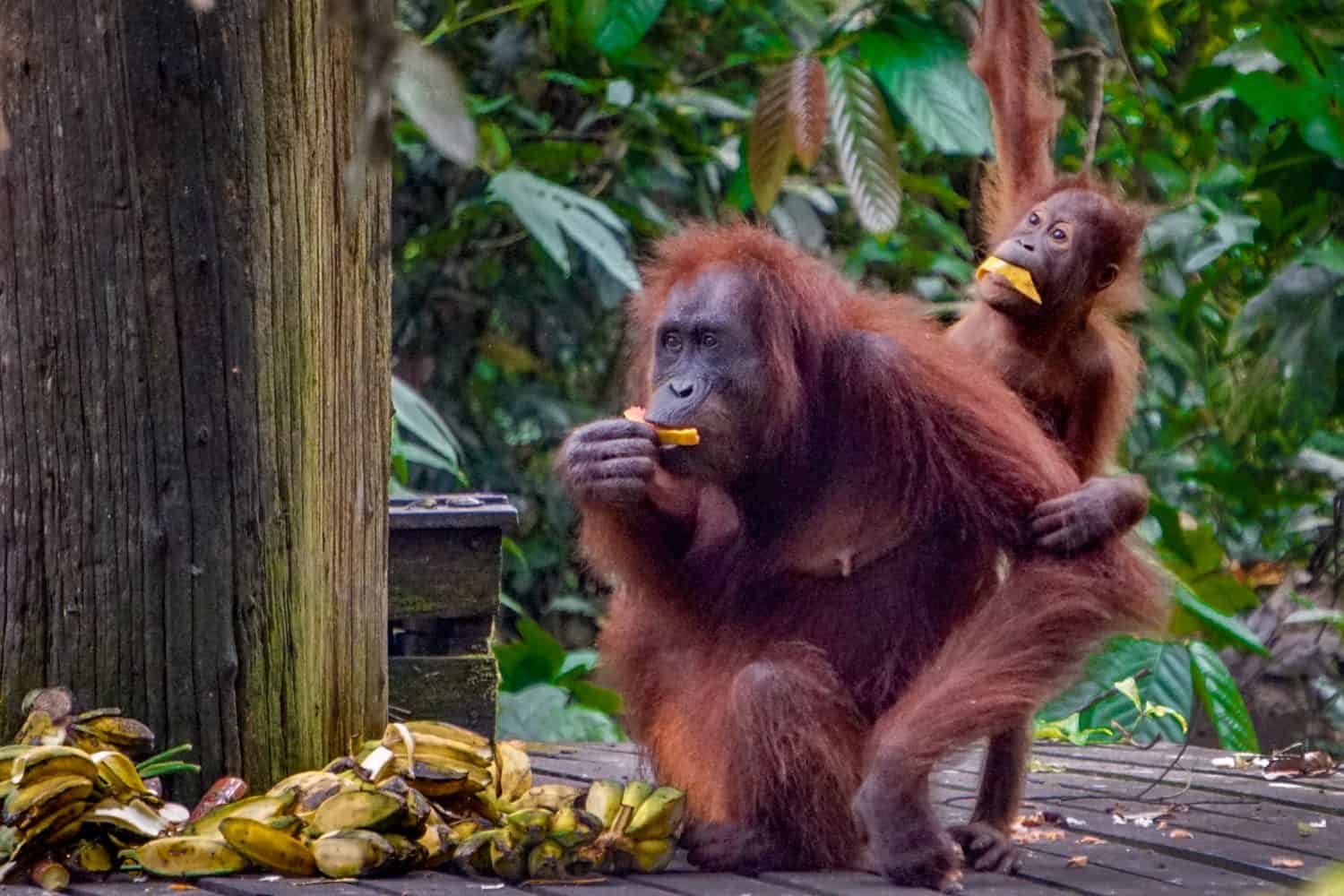
Primarily frugivorous, orangutans feed on both fresh and fermenting fruit.
©Kylie Nicholson/Shutterstock.com
Both the Bornean orangutan (Pongo pygmaeus) and the Sumatran orangutan (Pongo abelii) will chow down on fermented fruits. Orangutans are particularly fond of eating fermented durian fruit. The widespread consumption of fermented fruit by great apes and other primates supports the theory, called the drunken monkey hypothesis, that humans inherited an inclination for alcohol from our primate ancestors.
7. Chimpanzees (Pan troglodytes)
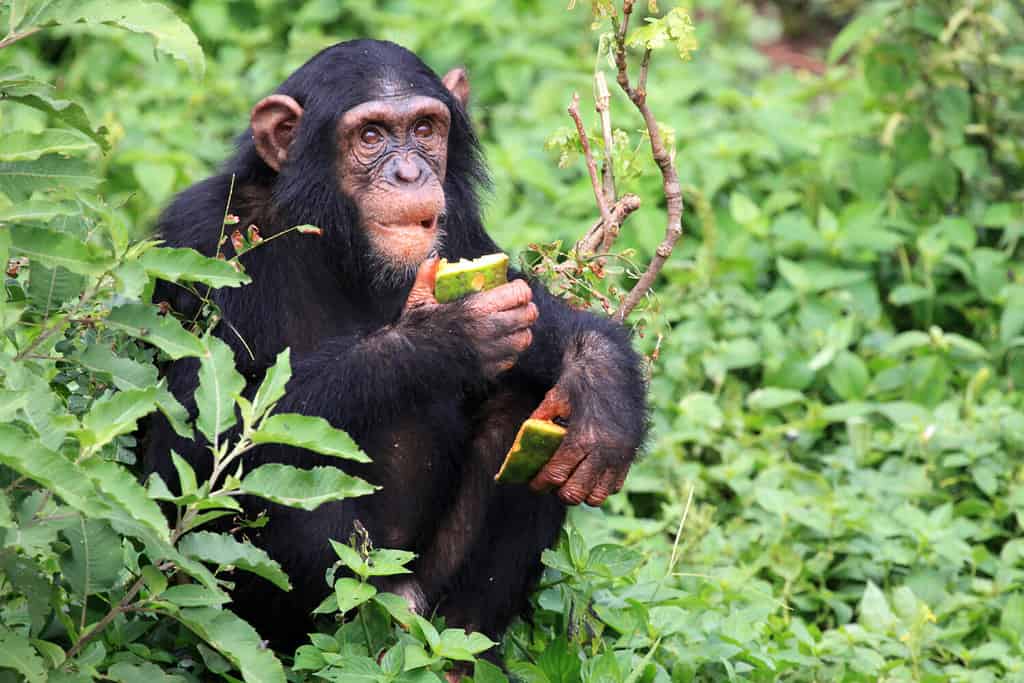
Some chimpanzees will sip on strongly fermented tree sap when given the chance.
©Sam DCruz/Shutterstock.com
Chimpanzees (Pan troglodytes) are particularly fond of eating fruit, both fresh and fermenting. Not only will these omnivorous frugivores eat fermented fruits, but one study also found that they will take a sip of alcoholic sap when the opportunity arises.
In a 17-year-long study that tracked a population of chimpanzees in Guinea, researchers found that adults had learned to drink fermented raffia sap from containers humans placed around the trees. Local people within the study area collected the fermented sap several times daily. However, the chimps learned to dip the leaves used to cover the containers into the sap when humans weren’t around. They then squeezed the sap from the leaves into their mouth, which can measure between 3.5-6.9% alcohol by volume.
8. Animals That Eat Fermented Foods: Cedar Waxwings (Bombycilla cedrorum)
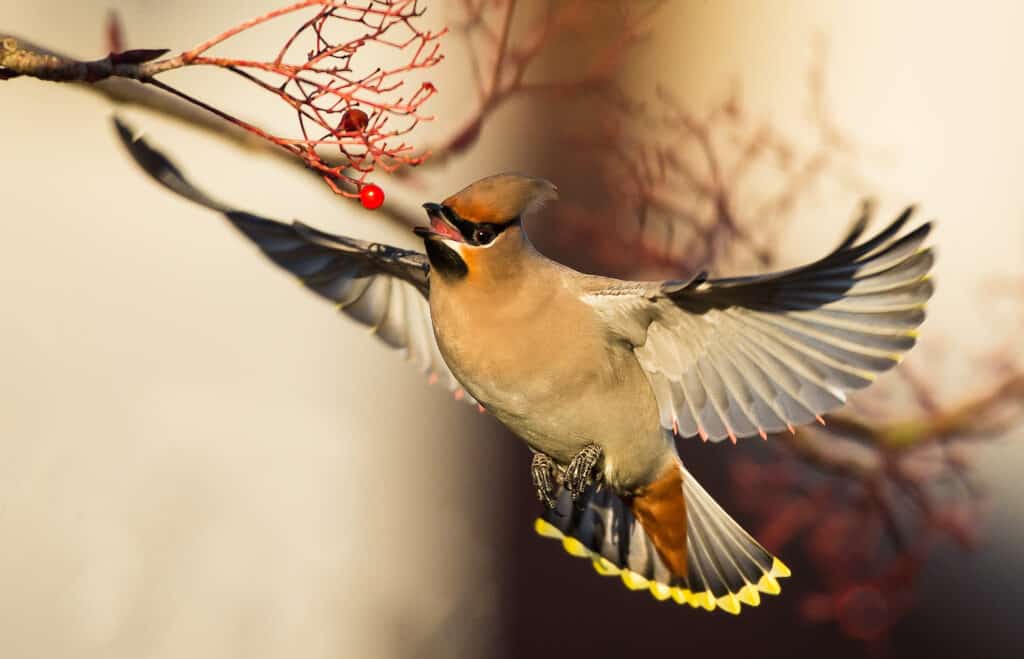
Among berry-eating birds, cedar waxwings are particularly known for chowing down on fermented berries.
©Paul Tymon/Shutterstock.com
A number of bird species will chow down on fermented berries. One notable species particularly fond of alcoholic berries is the cedar waxwing (Bombycilla cedrorum). Depending on the season, the list of fermenting berries the cedar waxwing will feed on includes serviceberries, raspberries, juniper berries, mulberries, dogwood berries, eastern red cedar berries, madrone berries, and mistletoe berries.
The photo featured at the top of this post is © Natalia Golovina/Shutterstock.com
Thank you for reading! Have some feedback for us? Contact the AZ Animals editorial team.







